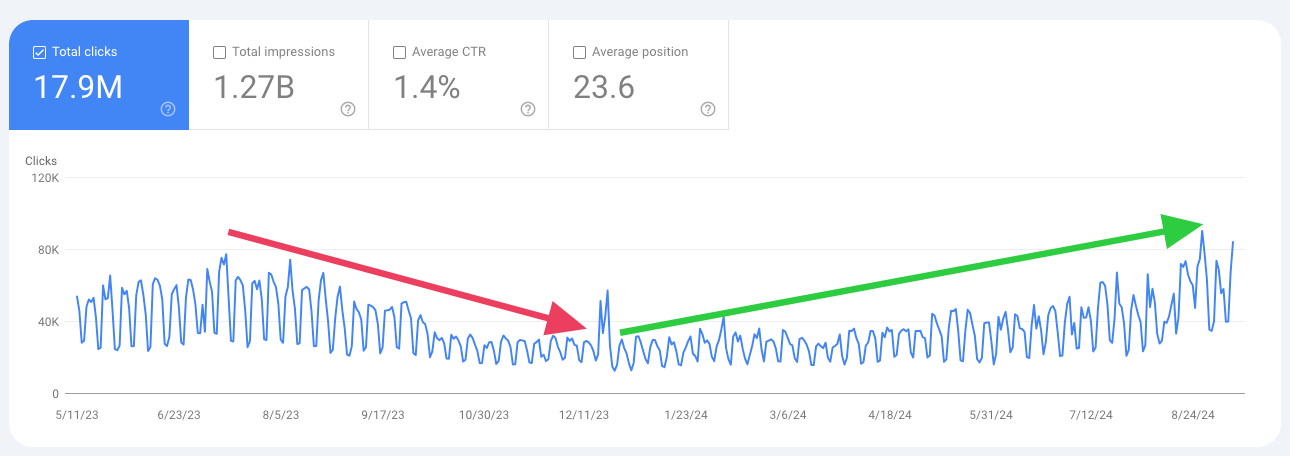This is the story of how a once great news publisher plummeted from greatness, losing 60% of its organic traffic (going down to 700,000 organic monthly visits) due to updates, technical issues, and mis-targeted keywords, and rebirthed into the 2 million visit per month powerhouse they really are.
In December 2023, this client approached us to understand why their traffic had fallen off a cliff and continued to spiral downwards for 6 months., bottoming out at 20,000 clicks per day.
As a major publisher in their industry, things looked bleak unless we were able to stop the continued loss of visibility and reverse the organic traffic trend.
We started by conducting a deep audit encompassing an array of technical, content, and performance checks to identify any critical issues that could be prioritized to resolve first. This immediately uncovered a laundry list of issues contributing to the traffic loss since the Helpful Content Update (HCU) was released in September 2023.
Fixes for those issues were prioritized ahead of the completion of the audit to enable the client to “stop the bleeding” as fast as possible while we completed a more comprehensive plan for full recovery and growth.
Our Approach to Traffic Recovery
Once our inclusive audit was completed, we had to review the dozens of problems we found to prioritize for impact. In 2024, clients, and especially developers, don’t want to see long lists of issues, they want to see the top 5 things that will move the needle.
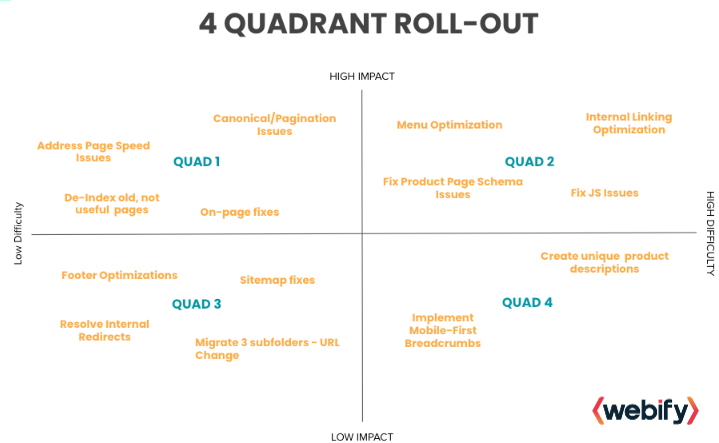
There were a litany of technical issues ranging from dead AMP pages that were still being crawled (and eating into the site’s crawl budget), canonical loops causing crawl traps and bloat, and tens of thousands of pages that we were able to quickly kill (404) and de-index to free up crawl budget and increase the site’s baseline performance speed.
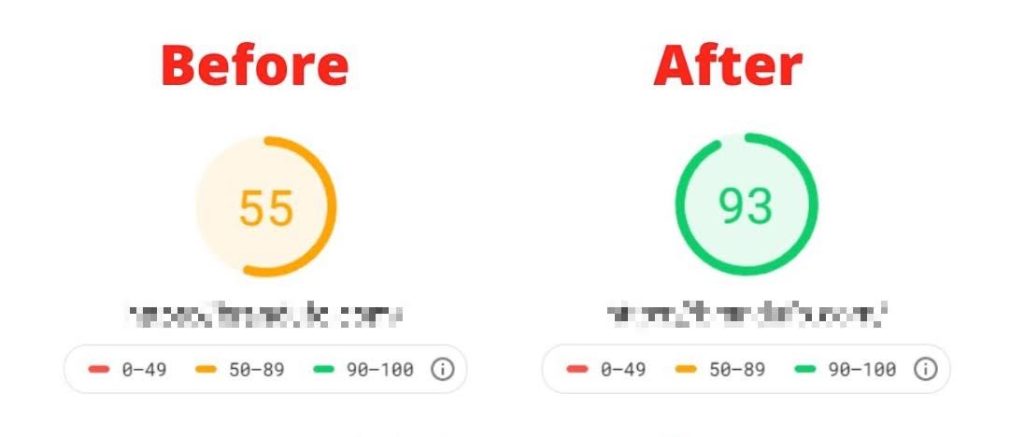
The information architecture was also not designed in a way that allowed topical authority to properly flow from parent to child and child to grand-child, so we redesigned the taxonomy to create a few new sections and allow for the creation of international editions of pages. Additionally, we made changes to navigational elements within different sections of the site (and the global navigation) to lessen the crawl depth and drive more authority to higher-priority pages.
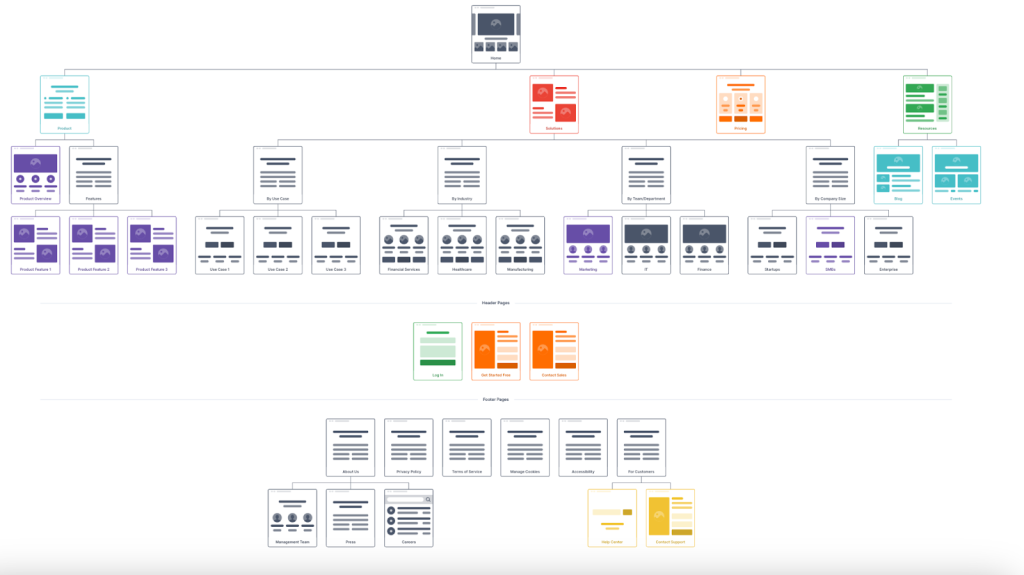
Next, we decided to test removing some of the ad units to address the time to first contentful paint, latent indexing, and general speed issues – and we were able to strike a balance between performance and monetization.
The next high-priority task was to partner with the content team to coach them on how to leverage Google News, Discover, and time-based news posts for ‘the regular’ Search Results.
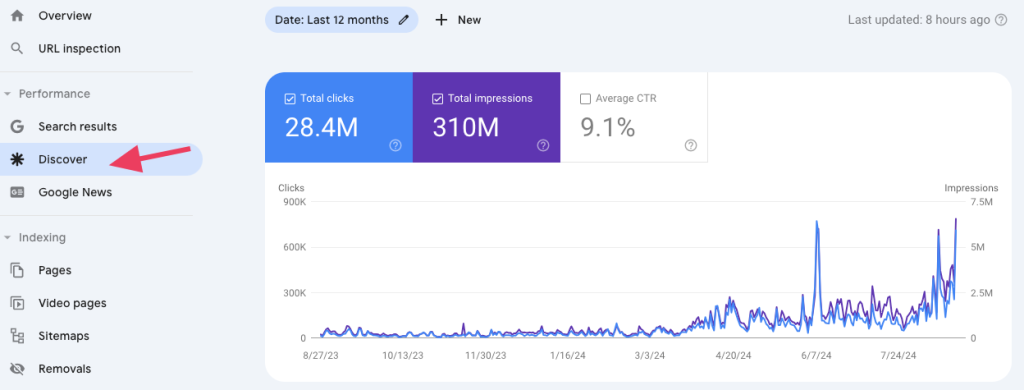
Our changes to some of the structural and navigational elements of the website allowed us to not only optimize for Google Discover, but also to position the site to be more Google News friendly, leading to a massive boost in both traffic types.
So much so that we were able to generate record new daily clicks from both channels:
- Google Discover: 1,025,500 clicks in one day
- Google News: 33,400 clicks in one day
Avoiding wasteful (and potentially costly) mistakes
The client was also misinformed on the state of their link profile and was convinced they needed to build and submit a disavow file to Google.
Thankfully, we were able to educate them on why that was a bad idea in their particular case, and we moved on to focus on more high-impact issues as part of our recovery strategy.
The Timeline and Next Steps
The recovery implementation began in February 2024, so we’re just at the 6-month point now, but traffic has come back from a low of 700,000 to just over 2,000,000 per month, with no signs of slowing down.
Now comes the fun part, where we can leverage all of the foundational work and relevancy we’ve created to expand their topical categories and start targeting new, higher-volume keywords to continue growing traffic.
The plan from here is to select three languages that are representative of their customer avatar and begin the localization process of their content to target traffic in those countries.
Using our [international opportunity analysis ← link] we were able to identify that Spanish, Italian, and German represent the most significant traffic volumes for their translated keywords, so those will be the locales we localize to target first.
We project the execution of this strategy will enable our client to acquire as many as 3 million visits per month from SEO.
In Conclusion
If your website has been hit by one of the many Google algorithm updates in the past 12 months, from HCU to any of the core updates, and you’re looking to recover your traffic – we should speak.
If you’re looking for help to make your website traffic graph resemble this one:
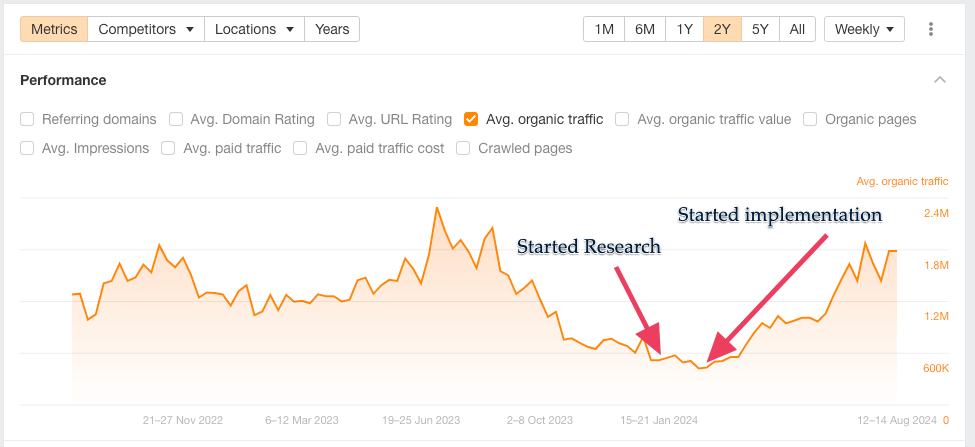
Please get in touch today to schedule a no strings attached strategy session with me personally. Contact us to get started .
Igal Stolpner co-founded Webify after leaving his role as VP Growth at Investing.com, where he started as the first employee back in 2007, and left when the company was sold in 2021.
Igal led the company’s growth from zero to over 250M monthly sessions, with over 50% of traffic coming from organic search, taking it from zero to among the top 200 sites globally.

